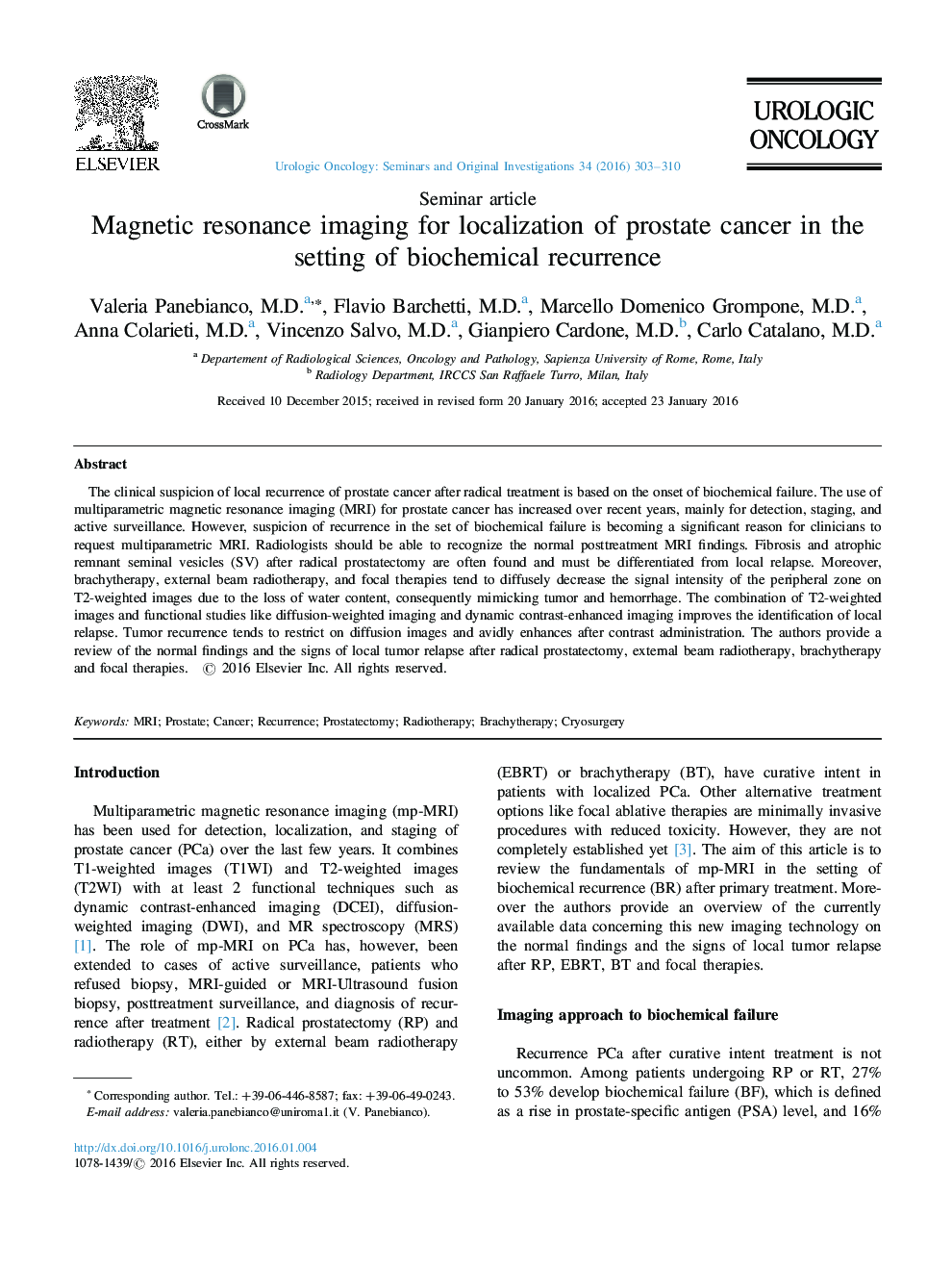| Article ID | Journal | Published Year | Pages | File Type |
|---|---|---|---|---|
| 3999318 | Urologic Oncology: Seminars and Original Investigations | 2016 | 8 Pages |
The clinical suspicion of local recurrence of prostate cancer after radical treatment is based on the onset of biochemical failure. The use of multiparametric magnetic resonance imaging (MRI) for prostate cancer has increased over recent years, mainly for detection, staging, and active surveillance. However, suspicion of recurrence in the set of biochemical failure is becoming a significant reason for clinicians to request multiparametric MRI. Radiologists should be able to recognize the normal posttreatment MRI findings. Fibrosis and atrophic remnant seminal vesicles (SV) after radical prostatectomy are often found and must be differentiated from local relapse. Moreover, brachytherapy, external beam radiotherapy, and focal therapies tend to diffusely decrease the signal intensity of the peripheral zone on T2-weighted images due to the loss of water content, consequently mimicking tumor and hemorrhage. The combination of T2-weighted images and functional studies like diffusion-weighted imaging and dynamic contrast-enhanced imaging improves the identification of local relapse. Tumor recurrence tends to restrict on diffusion images and avidly enhances after contrast administration. The authors provide a review of the normal findings and the signs of local tumor relapse after radical prostatectomy, external beam radiotherapy, brachytherapy and focal therapies.
